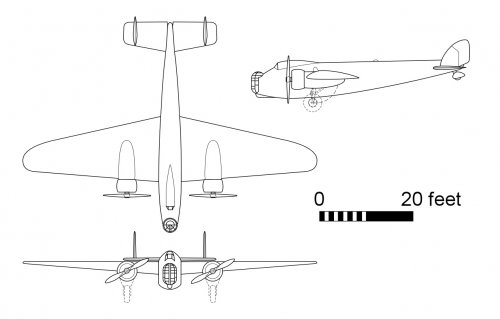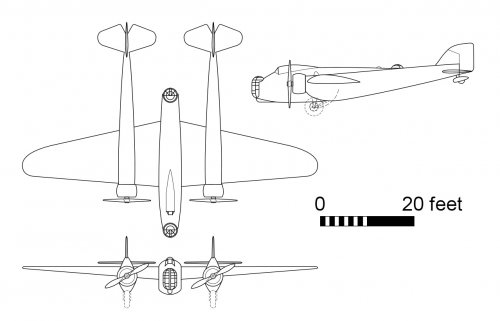- Joined
- 19 October 2012
- Messages
- 1,917
- Reaction score
- 1,766
Patents acquired by established aircraft manufacturers occasionally illustrated the claim using drawings of ‘real’ aircraft projects rather than generic concepts. One such example is GB429948, a scheme for a composite aircraft from Boulton Paul in late 1933. The bomber in the illustration is clearly a project that the company had under development that year as the text includes specific details of the aircraft, not actually relevant to the patent claim.
When Air Ministry specification B9/32 was issued the Disarmament Conference was still in session and one article under review was a limitation in the empty weight for bombers. Although it was obviously counter to the intent means were sought to enable a light aircraft to carry a heavy load, and a composite arrangement was one possible solution. B-P suggested that the bomber would be the lower component of the composite with the upper being a light aircraft with large wing area that served to aid the heavily loaded bomber into the air. B-P’s main proposal to the specification was the conventional P.70, a militarised development of the P.64 Mailplane, while for the composite they suggested a monoplane with retractable undercarriage. There are no indications that the project was taken further, either as part of a composite or as a conventional aircraft.
From the patent:
Span 63ft
2 x 650 hp engines
Max speed 250mph
Loaded weight 15,000 lb
Military load 1500 lb
Crew 3
Drawing cleaned up and gently modified from the original.
A later patent amended the design as a twin-boom to allow for a tail turret to be added

When Air Ministry specification B9/32 was issued the Disarmament Conference was still in session and one article under review was a limitation in the empty weight for bombers. Although it was obviously counter to the intent means were sought to enable a light aircraft to carry a heavy load, and a composite arrangement was one possible solution. B-P suggested that the bomber would be the lower component of the composite with the upper being a light aircraft with large wing area that served to aid the heavily loaded bomber into the air. B-P’s main proposal to the specification was the conventional P.70, a militarised development of the P.64 Mailplane, while for the composite they suggested a monoplane with retractable undercarriage. There are no indications that the project was taken further, either as part of a composite or as a conventional aircraft.
From the patent:
Span 63ft
2 x 650 hp engines
Max speed 250mph
Loaded weight 15,000 lb
Military load 1500 lb
Crew 3
Drawing cleaned up and gently modified from the original.
A later patent amended the design as a twin-boom to allow for a tail turret to be added

Last edited:

